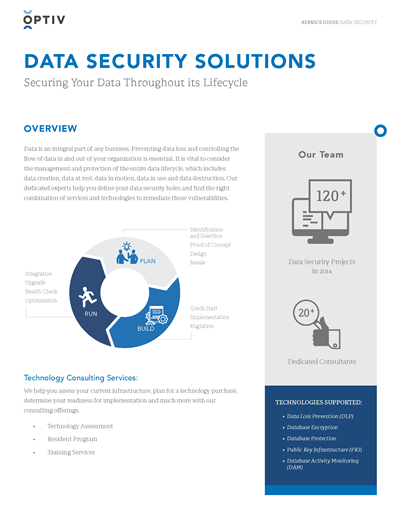The Impact of Effective Data Destruction on Cyber Security Risk Management
The Impact of Effective Data Destruction on Cyber Security Risk Management
Blog Article
The Significance of Effective Information Destruction Practices in Shielding Sensitive Information and Ensuring Computer System Security
In a period where data violations are progressively common, the value of efficient data devastation practices can not be overemphasized. Organizations face considerable dangers when sensitive info is inadequately dealt with, potentially leading to unapproved gain access to and serious monetary effects. Executing durable data devastation methods not just mitigates these threats however also lines up with legal conformity needs, ensuring that companies promote their online reputation and foster customer count on. However, the concern stays: what specific techniques can be used to boost these methods, and exactly how can companies properly incorporate them into their total cybersecurity structure?
Understanding Data Devastation
Recognizing information damage is vital in today's electronic landscape, where sensitive details can quickly be compromised. Reliable data destruction includes not simply ensuring yet erasing data that data is irretrievable through extensive techniques. This process is necessary for organizations that deal with confidential customer details, copyright, or internal papers, as any breach can cause extreme financial and reputational repercussions.
Information devastation encompasses various strategies, consisting of shredding physical media, degaussing magnetic storage space devices, and utilizing software-based remedies that overwrite data multiple times. Each technique offers a particular function and has to line up with the level of sensitivity of the information being disposed of. For instance, physical devastation is commonly preferred for difficult drives having highly personal data, while software application methods may be enough for much less delicate details.
Furthermore, sticking to market standards and policies, such as the General Data Defense Guideline (GDPR) or the Health And Wellness Insurance Coverage Portability and Liability Act (HIPAA), is imperative for conformity and to alleviate legal threats. Organizations needs to develop a durable information damage policy, train staff members on finest methods, and frequently investigate their procedures to guarantee that all delicate information is dealt with securely and efficiently.
Risks of Inadequate Practices
Inadequate information damage practices expose organizations to significant dangers that can have far-ranging effects. When delicate info is not appropriately gotten rid of, it stays vulnerable to unapproved gain access to, which can result in information violations and identity theft. Such occurrences not only endanger the security of individuals but likewise tarnish the organization's credibility, resulting in a loss of customer trust and potential economic consequences.
Furthermore, governing conformity is significantly strict in many sectors. Failure to abide by information damage regulations can lead to hefty penalties and lawsuits against organizations. These penalties can strain monetary resources and draw away focus from core organization operations.
Additionally, the misuse of residual information can result in intellectual residential or commercial property burglary or corporate reconnaissance, endangering competitive benefits (data destruction). The impact of poor data damage expands beyond instant economic losses; it can also lead to long-term damages to brand name stability and market placement

Organizations need to recognize that information safety is not entirely concerning avoiding breaches; it also includes the accountable monitoring of data throughout its lifecycle. Neglecting reliable data devastation methods can have devastating effects, underscoring the requirement for robust steps to alleviate these risks.
Best Practices for Data Damage
Carrying out efficient data devastation techniques is crucial for guarding sensitive information and keeping compliance with regulative requirements. Organizations ought to take on a multi-faceted strategy to make sure that data is irretrievable, therefore stopping unauthorized accessibility and prospective breaches.
First, information ought to be classified based on level of sensitivity, permitting organizations to use suitable destruction approaches tailored to the level of danger. For electronic data, making use of software-based data-wiping tools that abide by industry criteria can properly overwrite existing information. Physical devastation techniques, such as shredding or degaussing, are critical for devices that save delicate info, guaranteeing full elimination.
Establishing a clear information retention plan is important, detailing how much time various sorts of info ought to be retained prior to destruction. Regular audits of information storage space systems are also needed to determine unneeded or out-of-date data requiring elimination.
Furthermore, training staff members on the importance of data destruction and the details methods to follow fosters a society of protection within the organization. Finally, preserving documentation of data damage refines offers liability and supports conformity with internal policies and outside laws. By sticking to these ideal practices, organizations can substantially minimize the risks connected with data direct exposure.
Legal and Conformity Factors To Consider

Failure to abide by these laws can result in severe charges, including considerable penalties and reputational damage. Organizations needs to implement a durable information devastation policy that aligns with these legal frameworks and supplies clear standards on the correct approaches of data disposal, whether physical shredding or digital wiping.
Furthermore, preserving documents of information devastation tasks is vital for showing conformity throughout audits or inspections. By prioritizing legal and compliance considerations, companies can boost their data safety posture and foster depend on with clients and stakeholders, inevitably contributing to a much more safe information management environment.
Benefits of Effective Information Devastation
Effective data devastation techniques extend beyond simple conformity; they supply considerable benefits to companies that prioritize them. By ensuring that sensitive info is irretrievably ruined, organizations reduce the threat of information breaches and the prospective economic effects related to them. This positive technique not just safeguards against unapproved access but also enhances the general dependability of the organization in the eyes of stakeholders and clients.
Executing robust information destruction methods, such address as physical devastation of storage space tools or sophisticated information cleaning methods, contributes to the strengthening of an organization's cybersecurity pose. data destruction. It lowers the chance of copyright burglary and shields exclusive info, thus preserving an one-upmanship in the marketplace

Final Thought
In verdict, effective data damage techniques are important for guarding delicate info and improving total computer system safety and security. By carrying out comprehensive methods such as shredding, software, and degaussing overwriting, companies can minimize the threats connected with unapproved accessibility and information violations. Adherence to regulative criteria, including GDPR and HIPAA, further reinforces compliance and protects against lawful consequences. Eventually, a commitment to robust information damage methods fosters a culture of duty, therefore enhancing an organization's cybersecurity posture and keeping customer count on.

Report this page